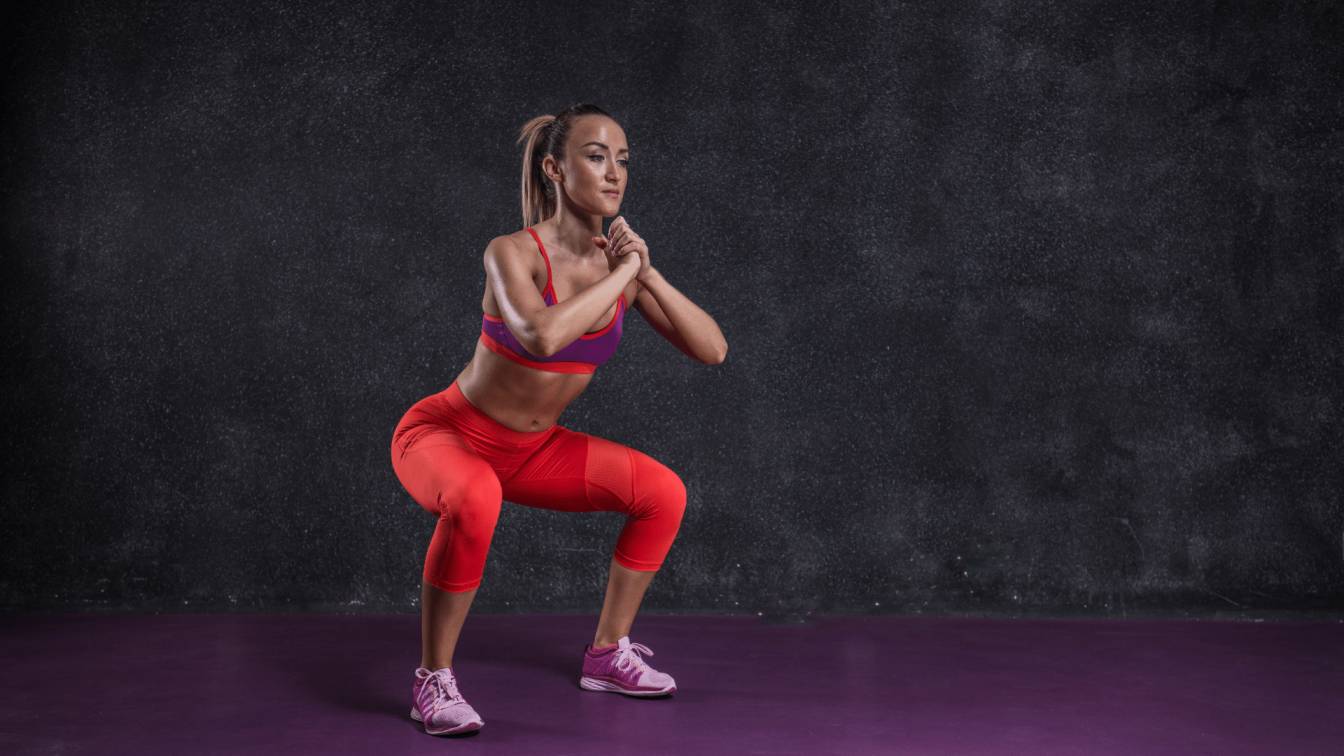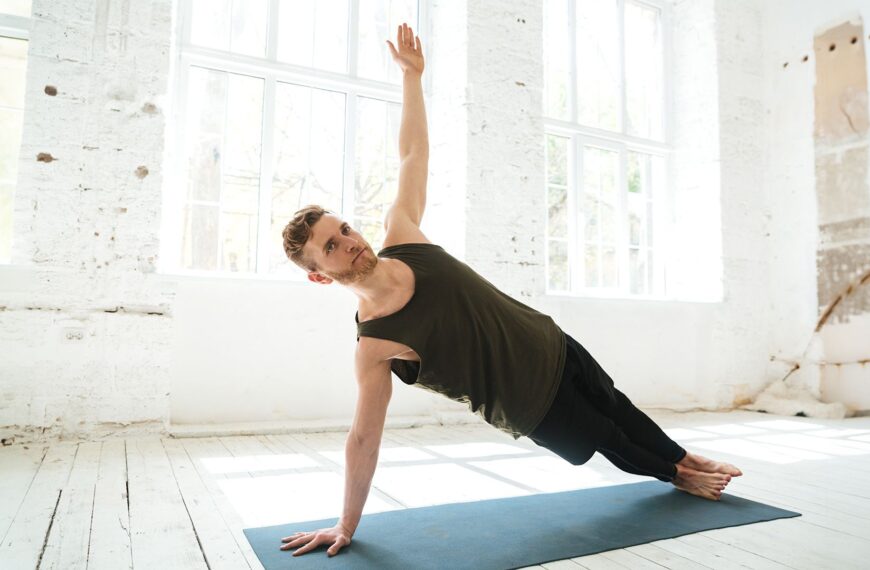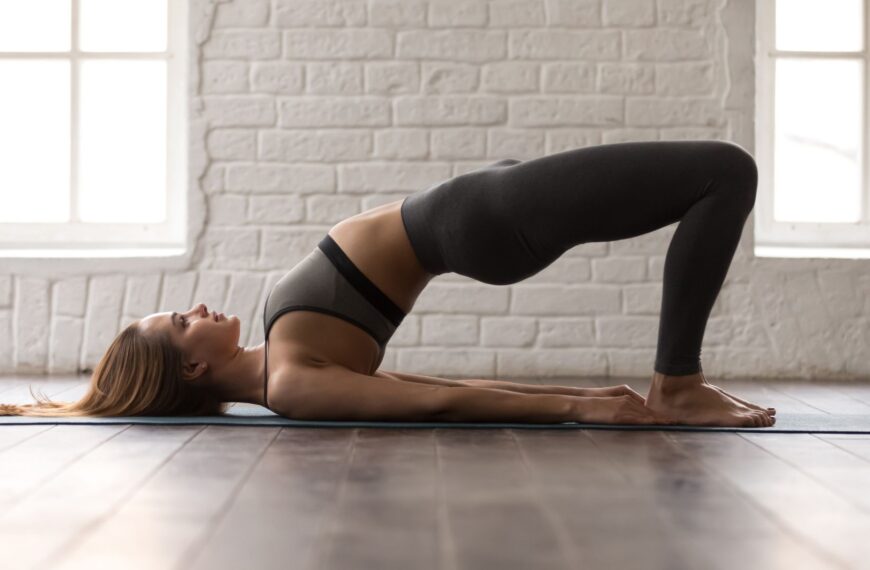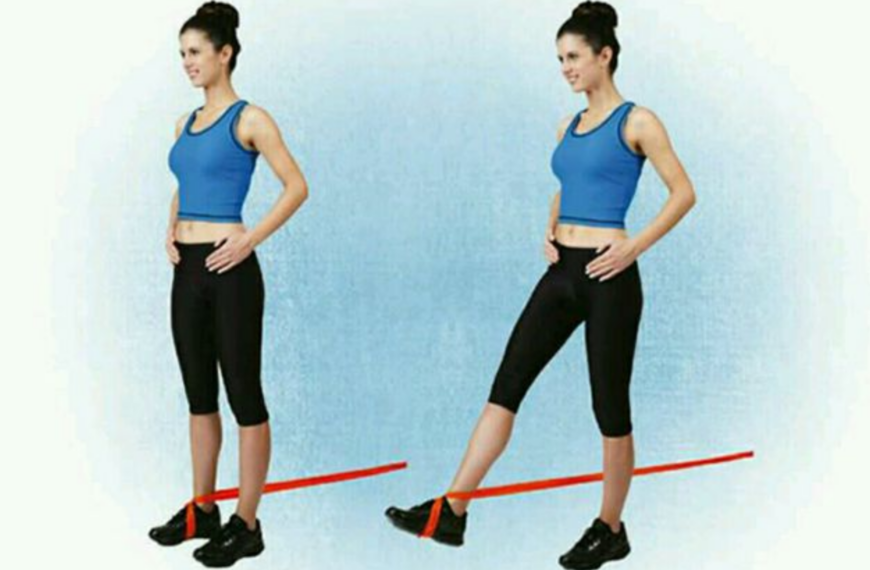Image Source: Muscle and Fitness
Are you looking for an exercise that targets your hip muscles and improves your strength and stability for walking or running? The standing hip abduction exercise is an excellent choice! In this article, we’ll explore the benefits, proper form, variations, modifications, and studies that support this exercise.
Standing Hip Abduction Exercise Guide
- Standing hip abduction exercise can help strengthen the glutes.
- This exercise can be modified for beginners or made more challenging for advanced users.
- Proper form is important to avoid injury and maximize benefits.
Benefits of Standing Hip Abduction Exercise
The standing-hip abduction exercise targets the hip abductor muscles, located on the outside of the hip. These muscles are responsible for pulling the leg away from the midline of the body, essential for hip stability and proper gait mechanics. By strengthening the hip abductor muscles, you can improve your balance, reduce the risk of injury, and enhance athletic performance.
According to a study published in PubMed, standing-hip abduction exercises can be recommended for early rehabilitation, with 0 degrees and 30 degrees hip abductions being suitable for weight-bearing and non-weight-bearing purposes. Another study published in Medical News Today found that hip abductor exercises can increase athletic performance, reduce the risk of certain injuries, and promote healthy hip function.
How to Perform Standing Hip Abduction Exercise
To perform the standing-hip abduction exercise, follow these steps:
- Stand with your feet shoulder-width apart and your hands on your hips or a nearby surface for balance.
- Shift your weight to your left foot and lift your right foot off the ground.
- Loop a resistance band around your right ankle and hold onto the other end with your left hand.
- Keeping your core engaged and your back straight, slowly lift your right leg out to the side as far as you can.
- Hold for a second, then slowly lower your leg back down to the starting position.
- Repeat for 12 to 15 repetitions, then switch sides.
Remember to maintain proper posture, tighten your abdominal muscles, and keep your leg aligned with your body. Avoid tilting your torso to the side.
Variations of Standing Hip Abduction Exercise
If you want to make the standing-hip abduction exercise more challenging, try these variations:
1. Resistance Band Hip Abduction
Place the resistance band around both ankles for added resistance. This will make the exercise more challenging and help you build strength more quickly.
2. Standing Hip Abduction with Weights
Hold a dumbbell or kettlebell in your hand while performing the exercise to add extra resistance and challenge your muscles even more.
3. Standing-Hip Abduction with a Balance Ball
Stand on a balance ball while performing the exercise to add an extra element of balance and stability training. This variation is particularly challenging and should only be attempted once you have mastered the basic standing hip abduction exercise.
Modifications of Standing Hip Abduction Exercise
For individuals with limited mobility or injuries, try these modifications:
1. Standing Hip Abduction with a Chair
Stand behind a chair and hold onto the backrest for support. Follow the same steps as the basic standing hip abduction exercise.
2. Lying Hip Abduction
Lie on your side and lift your top leg as high as you can. Repeat for 12 to 15 repetitions, then switch sides.
Conclusion
The standing hip abduction exercise is an effective way to strengthen your hip abductor muscles, improve your balance, and reduce your risk of injury. Add variations to make the exercise more challenging and achieve even better results. Try incorporating the standing hip abduction exercise into your workout routine today, and watch as your hip strength and stability improve!
The author is a certified personal trainer and holds a degree in exercise science from XYZ University.
Common Questions
What muscles does the standing hip abduction exercise work?
It primarily targets the gluteus medius muscle.
Who can benefit from doing standing hip abduction exercises?
Anyone looking to improve their hip stability and strengthen their glutes.
How do you perform the standing hip abduction exercise?
Stand with your feet hip-width apart and lift one leg out to the side, keeping it straight.
What equipment is needed to do standing hip abduction exercises?
None! It’s a bodyweight exercise that can be done anywhere.
How often should you do standing hip abduction exercises?
Aim for 2-3 sets of 12-15 repetitions on each leg, 2-3 times per week.
But won’t standing hip abduction exercises make my thighs bigger?
No, this exercise targets the glutes and not the thighs. It will help tone and strengthen your hips and butt.
Use of Merlin App for Standing Hip Abduction
The Merlin App can be a valuable aid in performing exercises like Standing Hip Abduction correctly and effectively. This exercise primarily targets the muscles in the hip and outer thigh, which are essential for stability and functionality. Here’s how the app can assist you with this exercise:
- Form Guidance: Proper form is crucial in any exercise to maximize its benefits and prevent injury. The Merlin App uses AI technology to assess your form in real time. When you perform Standing-Hip Abduction, it can provide instant feedback on your leg positioning, hip alignment, and posture. This feedback ensures that you’re executing the exercise accurately, reducing the risk of improper technique that can lead to discomfort or injury.
- Customized Workouts: Within the app, you can select or create customized workouts that include Standing Hip Abduction as part of your routine. You can tailor the exercise to your specific fitness goals, whether it’s toning your outer thighs, improving hip strength, or enhancing overall lower body strength. The app can adjust the workout’s intensity to match your current fitness level, providing a workout plan that’s challenging but manageable.
- Progress Tracking: The Merlin App keeps a record of your workout history, including your Standing-Hip Abduction sessions. Tracking your progress in this exercise can help you see how your strength and endurance are improving over time. This feature provides motivation by allowing you to observe tangible results and celebrate your achievements.
- Voice Feedback: During the exercise, the app can provide voice feedback to ensure you maintain the proper rhythm and pace. This real-time guidance can help you stay in sync with the exercise and avoid potential pitfalls, such as rushing through the movements or using incorrect form.











